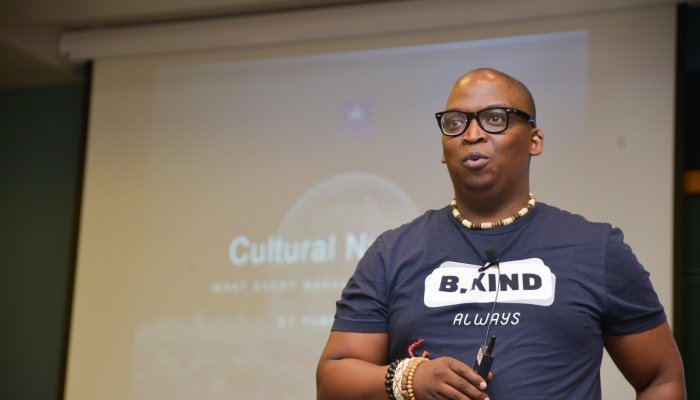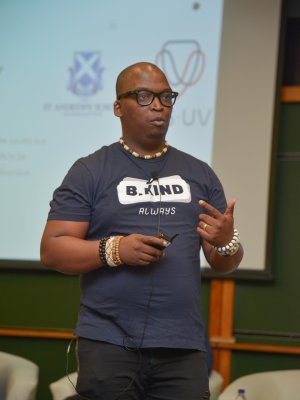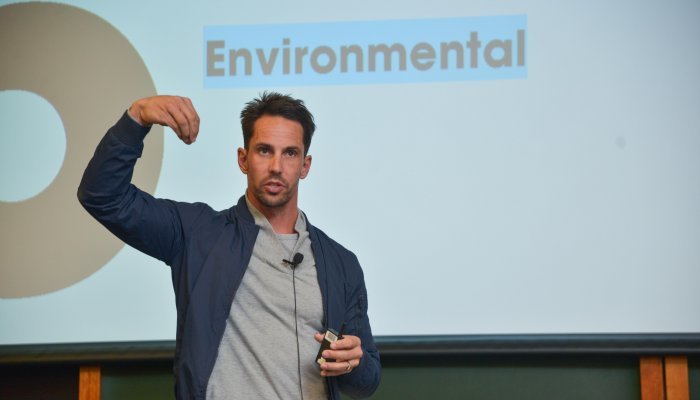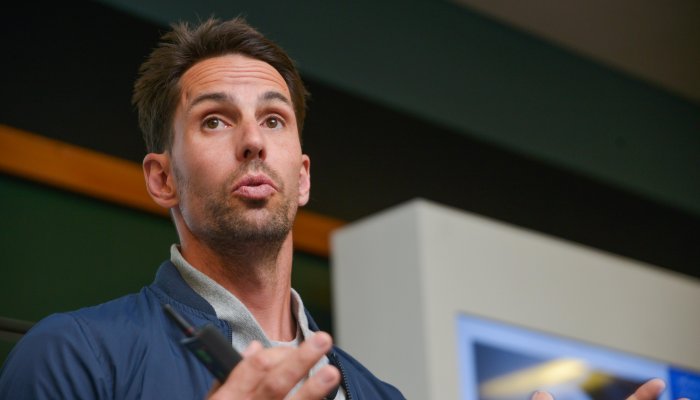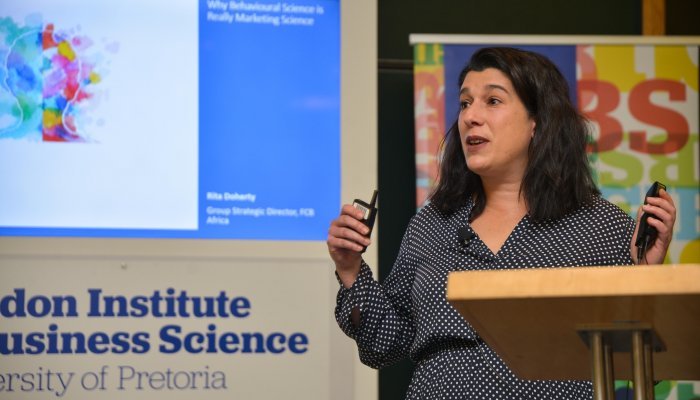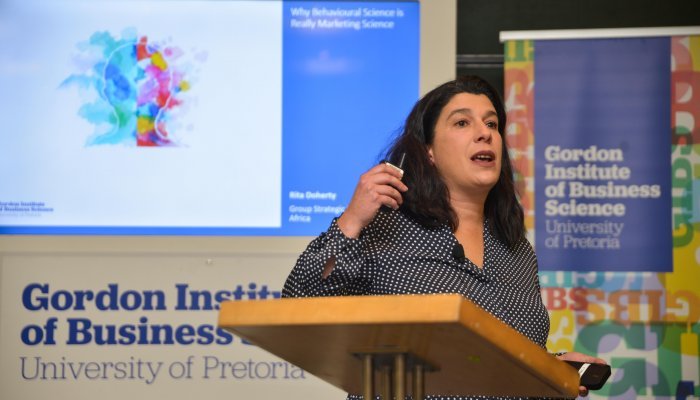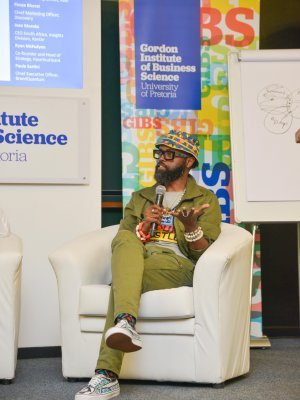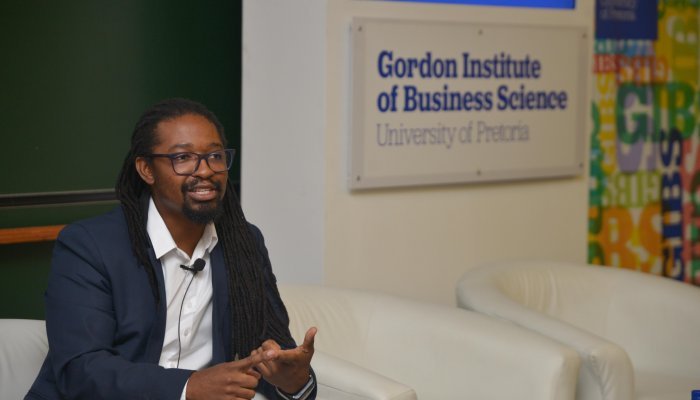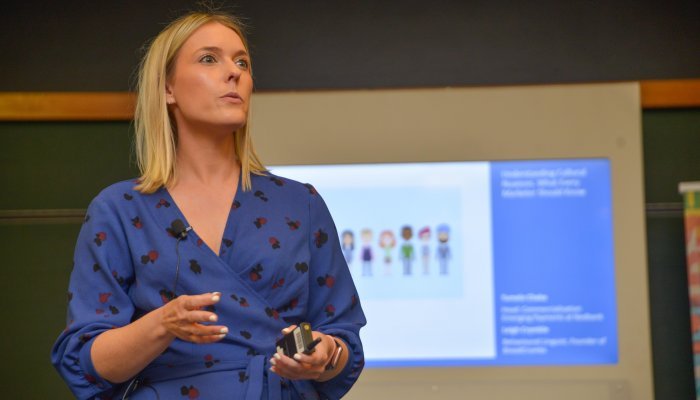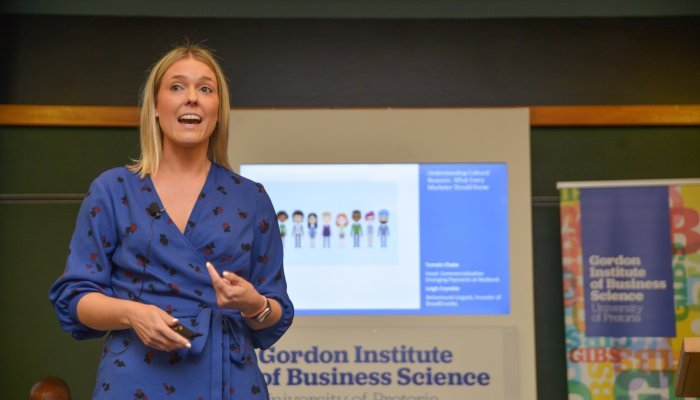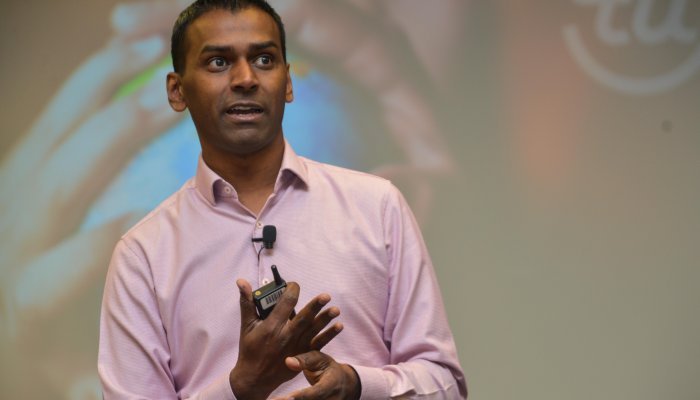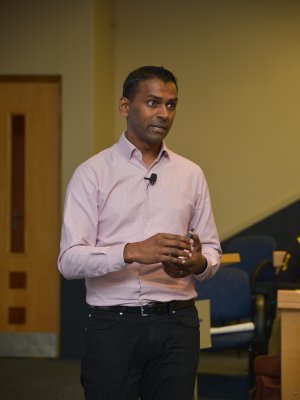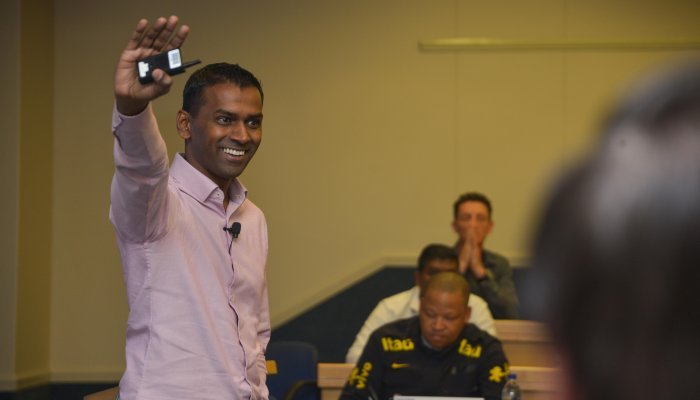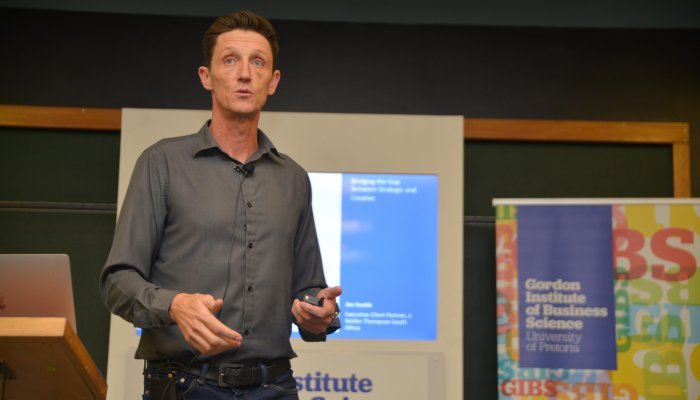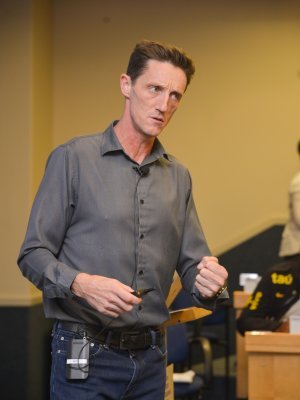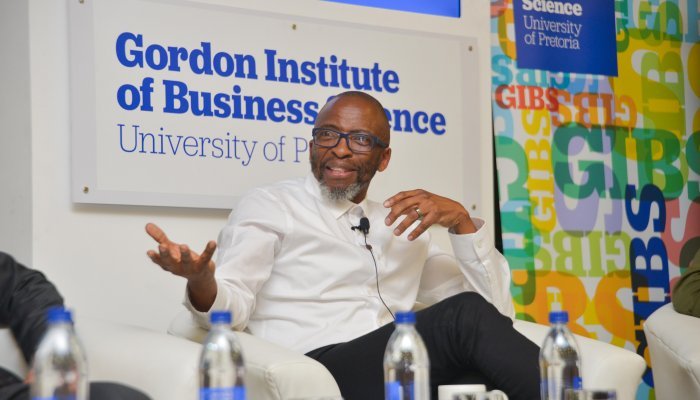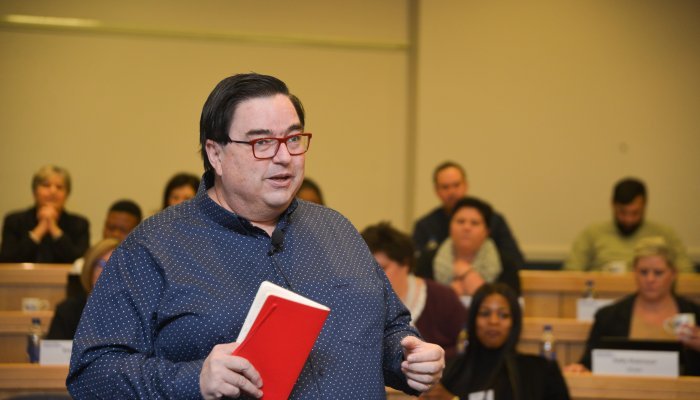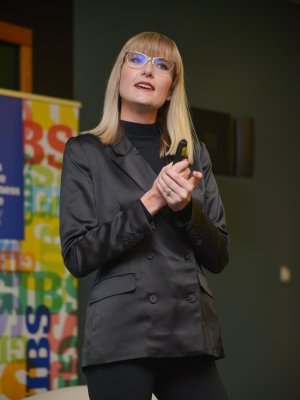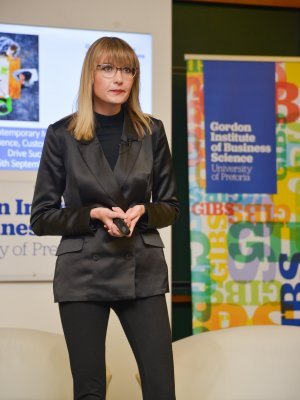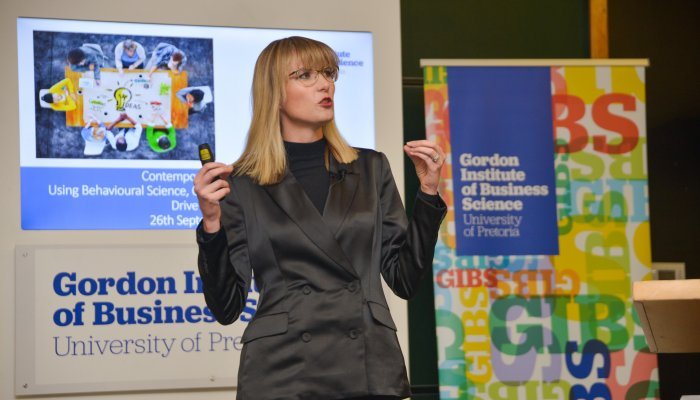It’s telling that in the midst of marketing’s data revolution, Jim Faulds, the respected adman at the helm of J. Walter Thompson (JWT) SA didn’t sign up for a degree in data analytics, data science or digital marketing, but rather headed to the Berlin School of Creative Leadership for an MBA tailored to meet the unique demands of professionals working in marketing, advertising, the media and design. In this example, it’s the word “creativity” that stands out amidst a raft of high-tech solutions and digital innovations.
Make no mistake, Faulds and other speakers at a GIBS marketing conference who are focused on operating in a Fourth Industrial Revolution (4IR) world voiced deep respect for the changes impacting their industry. But they also showed a keen appreciation for the human touch required to craft quality creative interventions and for the importance of appealing to human behaviour and intuition through storytelling.
For Faulds, the most profound impacts of digital disruption are evident in the human experience: on a collaborative level between the client and the agency (where great talent and skill must be acknowledged and rewarded), and between the brand message and its intended audience (putting the customer experience front and centre).
This, he said, called for partnerships within creative organisations and between clients and creatives, between consumers and companies, with strategists and the guardians of data. Quoting JWT account planning guru Stephen King, Faulds acknowledged King’s take on the future, made in 1985: “Real marketing cannot be thought of as a department activity. It is a matter of harnessing all the company’s resources to satisfy customers, and of linking what the customer wants with what the company is (or can become).”
...the future of marketing has less to do with algorithms and more to do with reaching people in their native tongue...
This means harnessing data and technology alongside people power and partnership. In practice it could mean using technology to fine-tune messaging using behavioural linguistics, which takes data science, analytics and SEO tools and merges them with psychosocial and sociolinguistic insights to guide consumer behaviour in a desired direction. In South Africa this is the realm of former Discovery Vitality marketer and BreadCrumbs founder, Leigh Crymble. BreadCrumbs, Crymble explained, uses “words across multiple platforms and compelling content to nudge people to make a decision”.
Making connections
But the ability to tap into sentiment using digital tools and respond by merging art and science to frame language, has implications beyond word selection, tapping into issues of cultural sensitivity and inclusivity. This evolution came across strongly during a presentation by Tumelo Chaka, a GIBS MBA and head of Commercialisation Emerging Payments at Nedbank. In a country where 98% of advertising is conducted in English, and where just 8.4% of households speak the language, Chaka said the future of marketing had less to do with algorithms and more to do with reaching people in their native tongue, being attuned to cultural nuances and shaping messages that are evocative to specific audiences. “It’s important that you market in my language, so I can connect with you,” said Chaka, a Sesotho speaker. “Until brands take us seriously, I won’t support any brand.”
...big data isn’t actually useful; that there is too much data...
Chaka singled out investment management firm Allan Gray’s 2018 “Father’s Share” commercial about a boy learning from his dad the value of investing for the long term. The advert was filmed in Sesotho, with English subtitles. Culturally it strikes the right chord, felt Chaka, but it also ticked the boxes highlighted by Ryan McFadyen, co-founder and head of Global Strategy at HaveYouHeard, an innovation marketing agency: the advert addresses a real social need for consumers to be heard and acknowledged.
Understanding human behaviour opens up a whole new world of engagement...
Be in the now
For McFadyen, brands should pay careful attention to being in the moment, rather than obsessively analysing the past and preparing and future-proofing for what lies ahead. “What’s happening in the world now? What are the trends that are happening now, and how do we tap into those, now? We need to remain relevant. If you remain relevant, now, you’ll continue to remain relevant into the future. But if you are only playing for the future, you’ll only be relevant in the future,” he said.
McFadyen reinforced a theme which permeated the conference, that data was not the Holy Grail for marketers. “I’m a huge believer that big data actually isn’t useful, that there is too much data, and you can misinterpret data… The problem is that we know how people are behaving but not why they are behaving that way. If you only know how they are behaving, how does that help you? Because now you are just trying to tap into a past behaviour. Whereas if you are able to understand why they are behaving the way they are, you are actually able to utilise that power, for good or for bad,” he said.
Of course, for data-driven organisations and experts like Discovery’s CMO, Firoze Bhorat, and Google Africa CMO, Mzamo Masito, the balance between the art and science of marketing must tap into the enabling role technology can play. “With tech, data is for everyone,” said Masito. “You have to worship both and stop having a favourite. You can be polygamous. In this case, it’s OK. In 20 years, the people we hire must marry both science and art.”
As Rita Doherty, group strategic director for FCB Africa, outlined in her marketing science address, technology alone cannot begin to understand the depths of human intuition and decision-making, but by appreciating human behaviours like risk and loss aversion and a reluctance to change, it is possible to tailor messaging beyond logic and into the realm of emotion.
The human touch
“Understanding human behaviour opens up a whole new world of engagement,” said Doherty. And people certainly show affinity with brands that understand them. This came through strongly during a presentation by Lesego Moagi, marketing executive at AutoZone South Africa. Moagi stressed that while tapping into new digital trends was important it was just as necessary to keep language and messaging simple, to focus on the user experience when building websites and platforms, and to invest in a workforce that can underline and support the brand and its word-of-mouth credentials. In some cases, this also meant hanging onto old, and often antiquated, technologies to satisfy a loyal consumer segment.
Sharing a story from his very first day at AutoZone, Moagi said, “I was doing a tour of the building, and I said: ‘What’s that?’ It was a fax machine. You will not believe, to this day, we still have customers who handwrite orders and fax them to us. Yes, we’ve changed a helluva lot, however, we still accommodate those guys. We only got rid of cheques in our business about eight months ago. The journey is about taking customers along with you.”
AutoZone and its fax machine epitomised the ebbs and flows of how marketers must operate in a 4IR world. This was reinforced by keynote speaker Bronwyn Williams, trend translator and future finance specialist at Flux Trends, who said, “The temptation is to opt for big data, but we need to remember that extracting value forgets that we are dealing with human beings. Longevity needs to be considered.” She added that as human beings become more cynical and unforgiving, trust will become increasingly paramount.
How then, asked conference moderator and GIBS commercial director, Howard Fox, do you “keep woke” in this environment?
Williams responded: “There is always some consultant who will come over to your company and sell you the latest gadget. I think a lot of businesses tend to forget what they are in the business of doing. They are in the business of adding value to their consumers’ lives. And, if you start with that premise, then everything else is just gravy.”
KEY TAKEAWAYS
· Access to swathes of information is changing how brands market themselves to consumers.
· Data has introduced challenges like deep fake news, fake bots, fake people and click farms designed to rig marketing metrics.
· Some consumers are starting to push back and are demanding a say in how their data is used.
· Despite radical changes, the one constant is the consumer.
· Tapping into human emotions and finding ways to add value to consumers is essential for securing mindshare and market share.
A CEO’s perspective
Lee Naik, CEO of information and credit management solution TransUnion Africa, believes the average CEO doesn’t care about the ‘how’ of marketing; just the outcome. In order to deliver the financial results he is seeking, Naik is an advocate of aggressively harnessing data and technology.
Naik’s tips for tomorrow’s effective marketer are:
· Make new friends. Collaboration within teams and organisations will be critical for the future, as will speaking the “language of IT and data”.
· Find new ways to know me better. “[As a marketer] you have all the data you need to know me better,” he said, “but you are too slow and you are asking the wrong questions.”
· Make data your religion. “If data is your religion, do you speak its language?” asked Naik. “As marketers, we need to understand and appreciate the data.”
· Play nicely with the machines. “We need to stop holding onto the things that will be automated.”
· Ask if it is making a difference. “[As a CEO] I’m not interested in how you executed the campaign – how did you impact the bottom line?”
· Become the growth engine for the business. “Do you know what moves the dials in your business? Where could you find 10% growth as a marketing person?”


